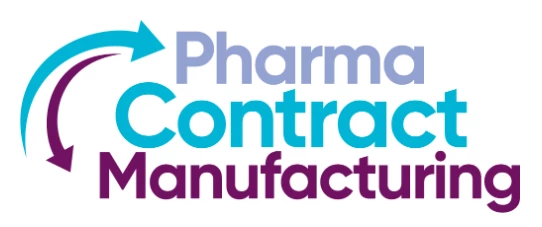How Lean Can Bring Real Benefits to Innovation in Pharmaceutical Research
Add bookmark
Lean is compatible with the innovative nature of research in R&D
When I provide training in Lean Process and Six Sigma, and facilitate Kaizen workshops in Pharmaceutical R&D, the issue people regularly raise is whether the application of Lean is compatible with the intrinsically innovative nature of research, or drug discovery in R&D. While they can see the value for manufacturing, supply chains, and any type of work involving formal processes, they worry that applying Lean will actually be detrimental to innovation. This belief is potentially strengthened by management approaches such as the Balanced Scorecard1 and the delineation of scientific researchers as “clevers.”2 These schools of thought typically separate out the more operational activities and roles associated with process improvement and project management from the intellectual activity of innovation.
However, my personal experience bears out that of Jeffrey Liker in The Toyota Way,3 and Terry Barnhart, Senior Director Strategy and Continuous Improvement at Pfizer, writing in “Future State.”4
There is a strong dynamic in pharmaceutical research between innovation and standardisation. To have any kind of reproducibility of results, innovation must lead to standardisation e.g. in the form of scientific protocols or SOPs (Standard Operating Procedures). Standardisation forms the basis for further, continuous or process improvement, and innovation enables such improvement. Lean can be applied to this dynamic in research as in any other aspect of R&D.
Innovation and standardisation are a dynamic duo in Drug Delivery
Although the advances in drug discovery in the 25 years that I have been in the industry have been tremendous, the intrinsic approach to the identification of potential new drug candidates has stayed the same. Potential (lead) compounds are identified through chemical, genetic and other routes. They are chemically synthesised and tested In-Vitro and In-Vivo through various drug metabolism, pharmacokinetic/pharmacodynamic, toxicology and biological assays or models. Chemists also evaluate alternative synthetic routes and characterise the physicochemical properties of the compound. Feedback from all of these tests and assays determines the suitability and viability of the compound for further development.
Here’s why innovation and standardisation are a dynamic duo during drug innovation:
- Innovation is needed to identify potential target disease areas and potential compounds, to develop synthetic routes, and to identify and develop appropriate assays, models and screening cascades. Innovation is also needed to make improvements to all of these based on the new data, information and knowledge obtained.
- Standardisation is needed to ensure a consistent approach to synthesis, to specific assays/models, and to screening cascades as each lead or lead series is being investigated.
[inlinead]
Kaizen workshops on cycle times for the evaluation of lead compounds can result in many lean improvements
The identification of potential drug candidates has both a scientific and a business component. As described above, there is scientific innovation and standardisation. Business skills are also needed to co-ordinate the team, activities, information and decisions associated with the evaluation of the compounds. I have designed and facilitated Kaizen workshops using the DMAIC approach (Define, Measure, Analyse, Improve, Control), to review the cycle times involved in the evaluation of lead compounds. UDEs (Undesirable Effects) have been identified through such tools as Ohno’s seven types of waste, spaghetti diagrams and Pareto analysis. Root cause analysis, using Ishikawa or Fishbone diagram, the “5 Whys” and matrix diagrams; brainstorming and “blue sky thinking”; and “future state” mapping of processes have resulted in a whole swathe of Lean improvement opportunities for review with stakeholders and sponsors. Anticipated reductions to cycle time of as much as 20 percent have been predicted from the implementation of these process improvements.
Opportunities identified for process improvement have included the following:
- Apply “single piece flow” rather than “batch” testing of compounds. This enables faster testing and feedback on a particular “lead” compound, thereby saving wasted time effort on making other leads that would not have the desired biological profile.
- Regularly review screening cascades to a) have those which are most critical to decision making earlier in the cascade and b) remove assays / models which are not providing useful information for decision-making.
- Explore ways of reducing lead-in time e.g. in the development of new assays/models.
- Ensure effective communication between the different areas of expertise within the team to ensure that each understands the decision-making criteria and requirements (timelines and quality) of the other: i.e. adopt an internal customer and quality mentality.
- Address resource requirements for bottlenecks (e.g. in Compound Screening) e.g. through flexible/increased resourcing and building staff availability into project plans.
- Review chemical compound and laboratory animal supply processes—again to move towards “single piece flow” rather than “batch” processing, and so a faster feedback loop.
- Simplify and streamline management review processes for more timely decision-making and project progression.
- Empower individuals on the project team to make decisions about resources and budgeting without having to rely on decisions from their “parent” functional team.
- Develop project leader / manager competencies to make the above a more consistent way of working, as well as to manage team issues, risks, communication, decision making and information more effectively.
- Implement technology to track compounds through the assays/models and minimise delays in their progression.
In drug innovation/discovery, science and business are intertwined in the opportunities they present for lean
As Terry Barnhart points out, Lean applies to any problem that people are trying to address. Science and business skills are intertwined in the processes involved for drug innovation. This article has described opportunities for applying Lean through Kaizen workshops to this aspect of Pharmaceutical R&D. There are potentially many, many more.
References
1. The Execution Premium by Robert S Kaplan & David P Norton, Harvard Business Press (2008)
2. Clever Leading Your Smartest, Most Creative People by Rob Goffee and Gareth Jones, Harvard Business Press (2009)
3. The Toyota Way by Jeffrey Liker, McGraw-Hill (2003)
4. Lean in R&D: The Surprising Fit, by Terence Barnhart. Future State – Yhe Journal of Competitive Lean Thinking, Spring 2008 pp1-3 http://www.leanexecs.com/digest/pdf/FutureState_Mar08.pdf
First published on Six Sigma IQ.
Have Your Say
Rate this feature and give us your feedback in the comments section below





















